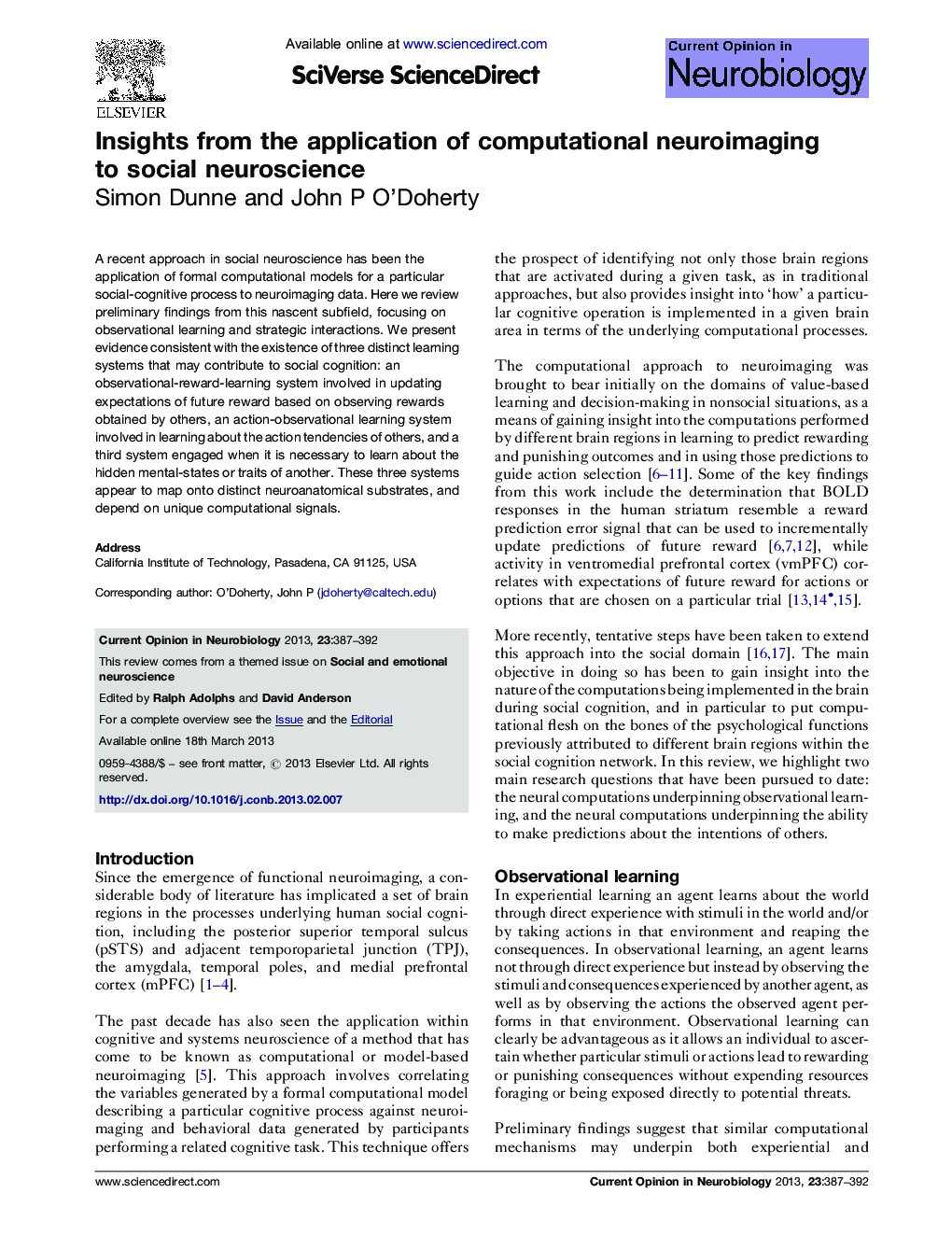| کد مقاله | کد نشریه | سال انتشار | مقاله انگلیسی | نسخه تمام متن |
|---|---|---|---|---|
| 6267178 | 1294931 | 2013 | 6 صفحه PDF | دانلود رایگان |
A recent approach in social neuroscience has been the application of formal computational models for a particular social-cognitive process to neuroimaging data. Here we review preliminary findings from this nascent subfield, focusing on observational learning and strategic interactions. We present evidence consistent with the existence of three distinct learning systems that may contribute to social cognition: an observational-reward-learning system involved in updating expectations of future reward based on observing rewards obtained by others, an action-observational learning system involved in learning about the action tendencies of others, and a third system engaged when it is necessary to learn about the hidden mental-states or traits of another. These three systems appear to map onto distinct neuroanatomical substrates, and depend on unique computational signals.
⺠We review the contribution of computational neuroimaging to social cognitive neuroscience. ⺠We review evidence that suggests the existence of at least three different learning systems in social cognition. ⺠These are an observational reward-learning system, an action-observation learning system and a strategic inference and learning system.
Journal: Current Opinion in Neurobiology - Volume 23, Issue 3, June 2013, Pages 387-392
